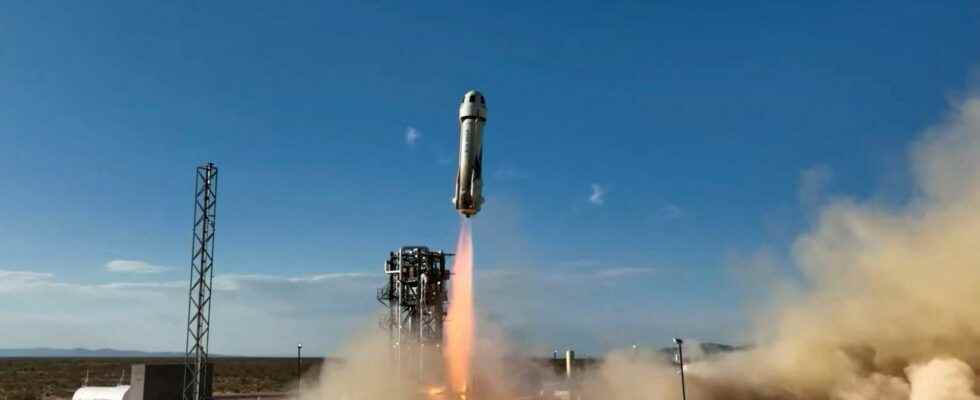You will also be interested
[EN VIDÉO] Blue Origin record: 107 km achieved by the New Shepard Climb aboard the New Shepard capsule, which completed another successful test flight. The machine, propelled more than 100 kilometers from the ground, reached space. Its passengers, if there had been any, could have admired the blackness of the sky and the roundness of the Earth. A camera makes us live what the future customers of these short suborbital journeys will be able to see.
Since the first manned flight into space, carried out by the Russian Yuri Gagarin in 1961, this extraordinary adventure seems to be able to seduce more than one; however, the experience is very costly, and manned space flight has long been reserved exclusively for astronauts trained in specific space missions.
It was in 2001, 40 years after the spacewalk of Yuri Gagarinthat the first real space tourist flies to the international space stationthanks to the Russian space agency which offers the wealthiest a trip to space for tens of millions of dollars, with the aim of solving its budgetary problems.
There have since been many companies aiming to send civilian tourists into space, whether for a stay on the International Space Station or for a flight. suborbitallike the company Virgin Galactic edited by Richard Branson. More recently, companies Blue Origin and SpaceXmounted respectively by the billionaires Jeff Bezos and Elon Muskhave carried out manned space flights by several civilians during the year 2021, raising questions about the relevance of such an activity, and the impact it could have on the climate earthly.
A much greater impact than that of the aeronautical industry
British and American scientists wanted to precisely assess the impact of the launches of rocket alone on the Earth’s climate, by compiling in a 3D atmospheric model the emissions generated by all of the 103 launches that took place during 2019, as well as the re-entry of space debris into the atmosphere.
And their results seem alarming: according to the authors, the soot particles emitted by the rockets would be up to 500 times more effective in retaining the heat than all other sources combined: although the emissions generated by rocket launches are generally considered to be greenhouse gases comparable to those of the aeronautical industries, their study thus tends to show that this view is false.
According to their studythe model also demonstrates the strong impact of such emissions on theozone stratospheric, thin atmospheric layer very fragile, and yet vital, because it protects us from the harmful radiations of the Sun : according to their model, a rate of weekly rocket launches would be sufficient to compromise the processes of recovery of the ozone layer observed since the implementation of the Montreal Protocol, aimed at eliminating on a global scale the substances threatening the ozone layer.
A booming sector
Although today the impact of space tourism is still weak – the sector of activity is only in its infancy – the authors of the study are concerned about its expansionist character: the strong impact of the emissions thus generated on our climate could unfortunately quickly become visible.
Such a study thus calls into question the relevance of such an activity, in view of the current climate emergency and the financial means implemented to carry it out. It therefore appears necessary to re-evaluate the collective interest of the space tourism sector, or at least to develop less polluting launch processes.
Reading ideas for the summer with Futura?
To celebrate the start of the holidays, we offer you the Mag Futura at the preferential price of 15 € instead of 19 €, i.e. a reduction of 20% !
What is Mag Futura?
- Our first paper journal of more than 200 pages to make science accessible to as many people as possible
- 4 major scientific questions for 2022, from the Earth to the Moon
- Home delivery*
*Special offer valid until July 19. Delivery is made in France (excluding metropolitan France), Switzerland, Belgium.
Interested in what you just read?
